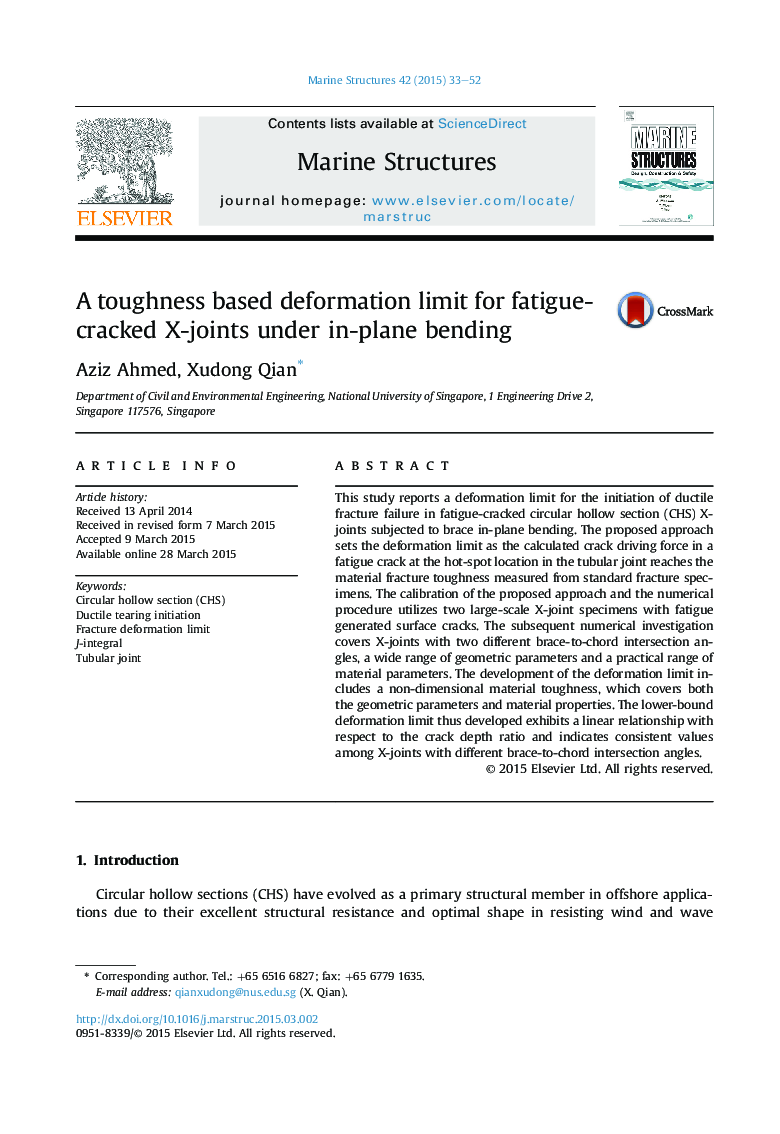| Article ID | Journal | Published Year | Pages | File Type |
|---|---|---|---|---|
| 294367 | Marine Structures | 2015 | 20 Pages |
•We propose a design deformation parameter based on the fracture toughness.•The proposed critical deformation covers wide geometric and material parameters.•The lower-bound deformation remains linear with respect to crack-depth ratios.
This study reports a deformation limit for the initiation of ductile fracture failure in fatigue-cracked circular hollow section (CHS) X-joints subjected to brace in-plane bending. The proposed approach sets the deformation limit as the calculated crack driving force in a fatigue crack at the hot-spot location in the tubular joint reaches the material fracture toughness measured from standard fracture specimens. The calibration of the proposed approach and the numerical procedure utilizes two large-scale X-joint specimens with fatigue generated surface cracks. The subsequent numerical investigation covers X-joints with two different brace-to-chord intersection angles, a wide range of geometric parameters and a practical range of material parameters. The development of the deformation limit includes a non-dimensional material toughness, which covers both the geometric parameters and material properties. The lower-bound deformation limit thus developed exhibits a linear relationship with respect to the crack depth ratio and indicates consistent values among X-joints with different brace-to-chord intersection angles.
